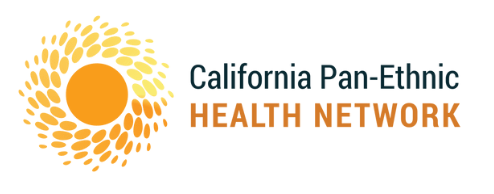As we discussed earlier this month, the American Public Health Association (APHA) is currently in the middle of a four-part series of webinars, The Impact of Racism on the Health and Well-Being of the Nation. Today, APHA’s third webinar, Unequal Treatment: Disparities in Access, Quality and Care, covered a variety of topics, including inequities in access to care for low-income communities and communities of color, the role of implicit biases in health disparities, and the impact of historical trauma on health.
The event featured an impressive lineup of speakers, including Brian Smedley from the National Collaborative for Health Equity, Michelle van Ryn from the Mayo Clinic College of Medicine, and Linda Rae Murray from the University of Illinois School of Public Health. The presentations showed that while we have come a long way in regards to expanding coverage, access issues prevent many in low-income areas and communities of color from getting the best possible care. Also, racism and other biases result in additional barriers to care for these populations.
At CPEHN, we see racism as one of the leading social determinants of health and in order to achieve health equity it will be necessary to eliminate the barriers racism poses as communities of color strive to live healthy lives. We appreciate APHA’s efforts to further this important discussion with events like today’s webinar.
Here are some highlights from the event, which was recorded and will be available to stream on APHA’s website.
Smedley pointed to the disparities that remain despite the coverage expansions of the Affordable Care Act, particularly in low-income communities.
.@briandsmedley: despite gains in coverage we know access disparities exist particularly for low-income #aphawebinar pic.twitter.com/eFceCyg2Dm
— CPEHN (@CPEHN) August 25, 2015
He also showed some maps that illustrated how people in low-income areas, who often have worse health outcomes, are also in areas with limited provider availability. He also talked about improving the diversity and cultural competency of the health care workforce.
http://twitter.com/TravelLiveTeach/status/636240206400634880
"We need to address health workforce needs, including training on implicit bias and increasing diversity among providers" #APHAWebinar
— Tulane PRC (@TulanePRC) August 25, 2015
All of this is a feature of what he referred to as “medical apartheid,” a tiered system of health care where some sectors of society have access to more convenient, higher quality services than large portions of the population.
http://twitter.com/TravelLiveTeach/status/636239733375418368
Little progress as a nation has been made in providing access to healthcare, despite the #ACA – Medical Apartheid exists. #APHAwebinar
— OR Public Health (@ORPublicHealth) August 25, 2015
Van Ryn, a leading expert on implicit bias, focused on the challenge of reducing disparities and how efforts to increase equity need to consider human nature and the root causes of racism.
Need to deconstruct the social narrative to look at emotions, values, and threats triggered #aphawebinar pic.twitter.com/ZylK2l5qJ6
— Ray R. Lewis, MPH (@rayrlewis1) August 25, 2015
Both institutional and individual level interventions are recommended to address implicit bias #aphawebinar
— Maureen Clark (@Maureen_E_Clark) August 25, 2015
Murray discussed the impact of historical trauma and racism on health today. She began by sharing this great cartoon that shows that the social determinants of health (i.e. racism, poverty, etc.) are often overlooked when developing strategies to improve health outcomes.
#APHAwebinar Dr. Murray pic.twitter.com/a8WgFmCN9c
— S Lawrence (@SLawrenceMPH) August 25, 2015
She then detailed the historical injustices faced by communities of color in America, making sure to address the unique traumas experienced by Native Americans, African Americans, Latinos, Asians, and Pacific Islanders.
Discussing structural racism by starting at the beginning…Indian Removal Act 1830 and the genocide of the First Nations #aphawebinar
— Ana Tellez 🐜 (@AnaTellez) August 25, 2015
http://twitter.com/TravelLiveTeach/status/636247743556489216
Most spent in slavery. RT @CPEHN: 12% of time African Americans spent on continent is post civil rights. #aphawebinar pic.twitter.com/bAs1lKuQ3L
— OR Public Health (@ORPublicHealth) August 25, 2015
She also discussed income inequality and how the recession of the past decade did not impact all communities equally. She showed how low-income individuals, particularly African Americans and Latinos, had a disproportionate share of foreclosures and other negative impacts.
Economic policy matters. As wealth gap increases health worsens for many…#APHAWebinar #publichealth #sdoh pic.twitter.com/CBbifRcOmH
— Kat Ellington (@katellington) August 25, 2015
Murray closed with this flow chart detailing how strategies to address the systemic inequities experienced by communities of color and low-income communities can only be addressed with a far-reaching approach that considers all of the structural determinants that lead to inequalities.
Murray: We need comprehensive efforts to address structural determinants to achieve systems change #aphawebinar pic.twitter.com/vPWPX5dgsi
— CPEHN (@CPEHN) August 25, 2015
You can follow #APHAwebinar on Twitter for more reaction to today’s webinar. The fourth and final webinar of the series, Racism: The Silent Partner in High School Dropout and Health Disparities, will be on September 1st at 11 am PT. You can register for that event on the APHA website.
